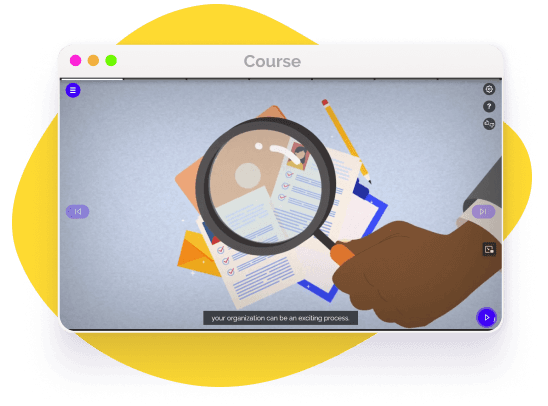Sexual Orientation in the Workplace
This chapter of EasyLlama's course will examine the importance of creating an inclusive and equitable work environment for all employees regardless of their sexual orientation.

LGBTQ+ Impact in the Workplace
The workplace has seen many changes in recent years; one of the most significant is the growing awareness of the impact of sexual orientation on the workplace. As we become more aware of LGBTQ+ issues, employers and employees alike have had to adjust to these changes. Sexual orientation has had a profound effectF, from increasing acceptance and recognition of LGBTQIA+ employees to the implementation of policies that protect this group from discrimination. This has resulted in a more inclusive and welcoming workplace, and has helped to promote a culture of diversity and acceptance.

Difference between Gender and Sexual Orientation
Gender and sexual orientation are two very different concepts that are often confused. Gender is a social construct that refers to the socially constructed roles, behaviors, activities, and attributes that a given society considers appropriate for men and women. It is typically based on biological and physical characteristics. On the other hand, sexual orientation refers to an individual's enduring physical, romantic, and/or emotional attraction to another person. It is typically categorized as heterosexual, homosexual, bisexual, or asexual. Gender and sexual orientation are both important concepts to understand and can have a major impact on how people live their lives.

LGBTQ+ employees may face numerous risks in the workplace due to their sexual orientation. Organizations that are not supportive of LGBTQ+ rights may be subject to these risks, resulting in a hostile work environment and potentially damaging the reputation of the organization.
LGBTQ+ employees are vulnerable to harassment, discrimination and bullying in the workplace. This can take many forms, including verbal abuse, physical threats, exclusion from social activities, jokes and derogatory comments, and more subtle forms of discrimination such as denial of job opportunities, promotions, and training.
LGBTQ+ employees may not feel safe or accepted in the workplace, which can lead to feelings of isolation and alienation. This can manifest in decreased engagement and productivity, as they may be too uncomfortable to participate in conversations or engage with coworkers.
Organizations that do not adequately protect the rights of LGBTQ+ employees may face legal action from both governmental and private institutions. This may include civil rights lawsuits for discrimination, harassment, or wrongful termination based on sexual orientation or gender identity.

Promote an inclusive environment with Sexual orientation awareness
This chapter on sexual orientation can help employers create an open, welcoming, and inclusive environment for employees of all sexual orientations. By understanding and creating a supportive workplace for all sexual orientations, employers can create a better workplace for all.
Stereotypes surrounding Sexual Orientation in the workplace
It is no secret that workplace discrimination based on sexual orientation is still very much present in many companies. Unfortunately, this has led to the proliferation of stereotypes surrounding people of different sexual orientations. These stereotypes can range from assumptions about the kinds of roles and responsibilities people should be in, to assumptions about the behavior and character of individuals.
Here are some myths to look out for:
- -
People who identify as LGBTQ+ are less likely to be promoted
- -
Bisexual people lack commitment
- -
Transgender people are untrustworthy
- -
Lesbian women are better suited for certain roles than heterosexual women

Promote an inclusive environment with Sexual orientation awareness
This chapter on sexual orientation can help employers create an open, welcoming, and inclusive environment for employees of all sexual orientations. By understanding and creating a supportive workplace for all sexual orientations, employers can create a better workplace for all.

Helping over 8,000 organizations create a safer, more productive workplace
This chapter introduces the role that sexual orientation plays in the diversity of the workplace that will be further detailed throughout the course.





















